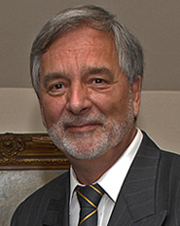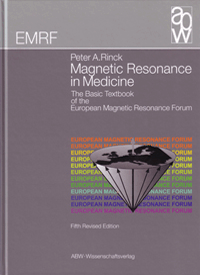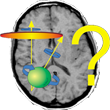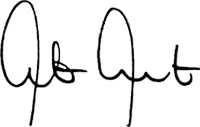






"Why, sometimes I’ve believed as many as six impossible things before breakfast."
Lewis Caroll 'Alice Through the Looking Glass'.
 e like books — printed on paper, if possible with a beautiful hardcover binding. Thus, putting one of the standard textbooks on the internet was a challenge for us.
e like books — printed on paper, if possible with a beautiful hardcover binding. Thus, putting one of the standard textbooks on the internet was a challenge for us.
For this digital edition we have updated and optimized contents, layout and the quality of the figures. We also made the visual presentation lighter to produce a more pleasant, informative and efficient user experience. We hope that the looks of the real textbook have not been lost completely — and, at the same time, that some of the advantages of e-learning bear fruit.
As with everything in life, MR imaging does not only require knowledge of facts but also background information for decision making. Therefore we have linked some subjective, critical, and (personal) opinion-oriented sections, intended to offset the technical nature of the teaching sections and provide some insights into more practical questions faced by MR users.
 If you want to learn something about magnetic resonance imaging or its applications choose your topic of interest. If you want to learn it from scratch start with Chapter 1; and if you want to air your brain, read the comments that are scattered in between and flagged with a writer's quill:
If you want to learn something about magnetic resonance imaging or its applications choose your topic of interest. If you want to learn it from scratch start with Chapter 1; and if you want to air your brain, read the comments that are scattered in between and flagged with a writer's quill:
This one, for instance, tells the story of how it all began.
Once upon a time, not so long ago …
 The first version of this primer — a little booklet — was written at Paul C. Lauterbur's laboratory on Long Island outside New York in the early 1980s. Lauterbur was the father of MR imaging; twenty years later he received the Nobel Prize. The text was intended to be used as the Basic Textbook for EMRF, the European Magnetic Resonance Forum.
The first version of this primer — a little booklet — was written at Paul C. Lauterbur's laboratory on Long Island outside New York in the early 1980s. Lauterbur was the father of MR imaging; twenty years later he received the Nobel Prize. The text was intended to be used as the Basic Textbook for EMRF, the European Magnetic Resonance Forum.
After Lauterbur saw the first edition, he commented:
"It looks like a fine book, especially for residents, nurses, and technicians."
Initially we thought this statement was not very encouraging, but in hindsight this was exactly what we had meant to write — though our target audience also included leaders of research institutions and university professors, to give them a lifeline for their teaching and research. We worked on it for another twenty years — and finally Lauterbur found the last edition he read before his death "gratifying".
The textbook has received outstanding reviews in major scientific journals. They were an incentive for us to continue the project and try to improve it. Some reviews of earlier (print) editions are collected on this page.

This is the fourteenth edition of Magnetic Resonance in Medicine — and its seventh e-Learning edition. It has been revised, enlarged, and adapted for e-Learning.
Earlier editions have been translated into Portuguese, Spanish, Italian, German, French, Polish, Russian, Japanese, and Chinese.
At present, the online edition will be available in English only. A new Spanish e-textbook edition will be released in 2024.
Over the years, the e-textbooks have gained a worldwide readership.
 Celebrating the 40th anniversary in 2024 will be a pleasant occasion. The child had grown up, become an adult or, in our case — a rather successful standard textbook. The reviews and public reaction to the book were extremely positive. The editor, the co-authors, and the involved institutions — The Round Table Foundation and the European Magnetic Resonance Forum — aim to publish high quality teaching material. Our goal is to promote honest and knowledgeable information of real significance; for this reason, we are committed to peer review and editorial independence.
Celebrating the 40th anniversary in 2024 will be a pleasant occasion. The child had grown up, become an adult or, in our case — a rather successful standard textbook. The reviews and public reaction to the book were extremely positive. The editor, the co-authors, and the involved institutions — The Round Table Foundation and the European Magnetic Resonance Forum — aim to publish high quality teaching material. Our goal is to promote honest and knowledgeable information of real significance; for this reason, we are committed to peer review and editorial independence.

 In magnetic resonance imaging beginners and even the more knowledgeable often have to believe what they read or hear about the topic — and regularly things seem to be impossible. Sometimes it seems like a fairy tale. This site tries to tell the tale and lead its readers from believing to understanding.
In magnetic resonance imaging beginners and even the more knowledgeable often have to believe what they read or hear about the topic — and regularly things seem to be impossible. Sometimes it seems like a fairy tale. This site tries to tell the tale and lead its readers from believing to understanding.
They should be able to acquire a basic knowledge which enables them to pursue studies of their own and to cope with some of the most common problems, such as image contrast and artifacts or questions concerning possible hazards to patients — in other words, the text presents the nuts and bolts; no more, no less.
The main author and the contributors did not attempt to cover the field completely nor to be exhaustive in the topics discussed, as the field of magnetic resonance still is in a permanent stage of development and therefore changing year by year, although the quantity of significant additions to the fundamentals has slackened during the last twenty-five years and the quality of many scientific contributions at conferences and in journals has deteriorated.
There are always new contraptions, but we are not interested in certain gadgets or trendy "apps" of commercial machines, and won't mention nor describe them.
Publish today …
 We wish to express our appreciation to numerous colleagues who, as experts in their field, have shared their knowledge and helped us with constructive criticism and helpful suggestions. There is a long list of contributors to this and earlier versions, among them Atle Bjørnerud, Patricia de Francisco, Steven E. Harms, Jürgen Hennig, Richard A. Jones, Jørn Kværness, Robert N. Muller, Gunvor Robertsen, Timothy E. Southon, and Geir Torheim. Their support, ideas, dedication, and feedback have added much to the quality of this work. We are also indebted to our friends who took care of some of the translations of the printed version, among them Andrea Giovagnoni for the Italian edition, Valentin Sinitsyn for the latest Russian edition, Luis Martí-Bonmatí and Ángel Alberich-Bayarri for an earlier Spanish edition, and Qiuju Zhou for the latest Chinese edition.
We wish to express our appreciation to numerous colleagues who, as experts in their field, have shared their knowledge and helped us with constructive criticism and helpful suggestions. There is a long list of contributors to this and earlier versions, among them Atle Bjørnerud, Patricia de Francisco, Steven E. Harms, Jürgen Hennig, Richard A. Jones, Jørn Kværness, Robert N. Muller, Gunvor Robertsen, Timothy E. Southon, and Geir Torheim. Their support, ideas, dedication, and feedback have added much to the quality of this work. We are also indebted to our friends who took care of some of the translations of the printed version, among them Andrea Giovagnoni for the Italian edition, Valentin Sinitsyn for the latest Russian edition, Luis Martí-Bonmatí and Ángel Alberich-Bayarri for an earlier Spanish edition, and Qiuju Zhou for the latest Chinese edition.
For a long time we have discussed what is the best choice:
Going for a printed textbook or an e-textbook for tablets?
Our latest answer is published here. The question remains:
Will this remain the final answer?
If you find any mistakes in this book, rest assured that they were left intentionally so as not to provoke the gods with something which is perfect. Still, we would be happy about your feedback. We hope that this textbook will be useful for you and that you will enjoy it. If you have comments or suggestions, please write to us.

Peter A. Rinck, Editor-in-Chief
on behalf of all contributors and collaborators